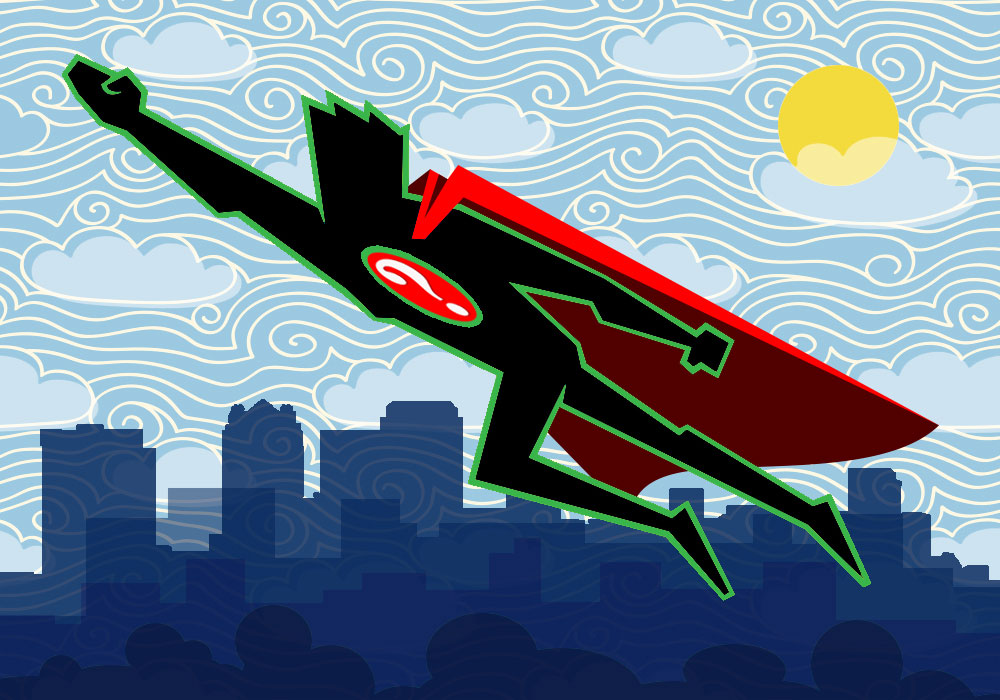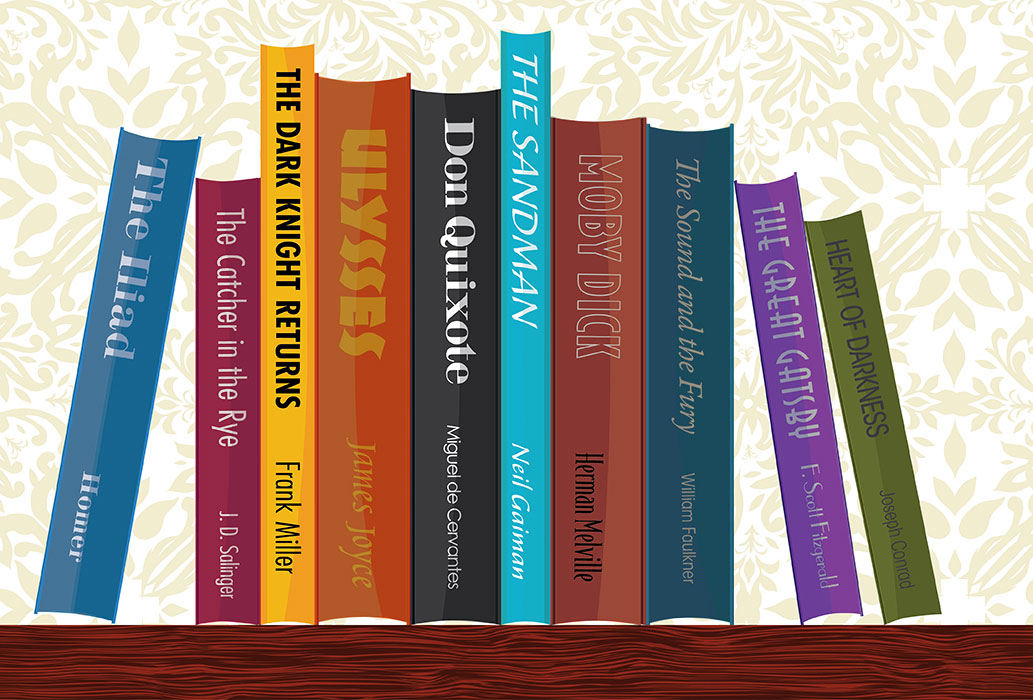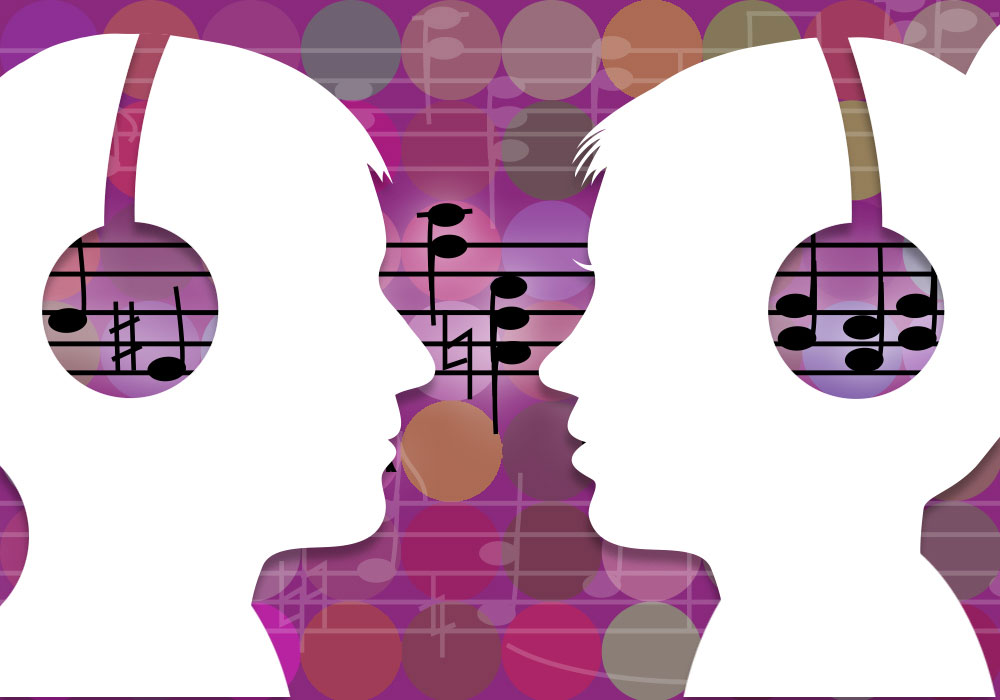It turns out that Spider-Man, Marvel’s famous web-slinger, vanquisher of villains, is good at teaching college philosophy, too.
He pops in to ignite discussion on complex concepts he’s wrestled with for decades: good versus evil, the nature of virtue, and individual responsibility. Naturally, students are all ears in the presence of a superhero.
Matt King, Ph.D., the assistant professor who teaches Spidey’s philosophy course, is among several faculty in UAB’s College of Arts and Sciences who harness the undeniable reach and power of popular culture—comics, music, film, and more—to introduce undergraduate students to serious academic topics. Gregory Pence, Ph.D., chair of UAB’s Department of Philosophy, says that this approach serves as an ideal springboard for engaging students in subjects that might otherwise seem intimidating or impenetrable because discussion begins with what they already find relevant and familiar.
Pence succinctly explains the concept by referencing philosopher John Dewey’s theory of education, which says that effective learning must begin not with what interests the teacher, but with what interests the learner. “With that theory in mind, the philosophy department has found that television, movies, and images in popular culture are an effective means for introducing students to topics such as bioethics, responsibility, free will, time travel, personal identity, skepticism, and truth,” Pence says.
Pence’s latest book perfectly illustrates the theory. In What We Talk About When We Talk About Clone Club (2016: Smart Pop), Pence uses BBC America’s hit sci-fi thriller Orphan Black to explore issues related to cloning, a key premise of the show. He addresses the science behind the storyline, separates fact from fiction, and discusses everything from eugenics to the ethics of human experimentation and the concept of patenting human life. By employing a popular TV program as a vehicle, Pence hopes to bring a more diverse audience into the conversation about bioethics, he says.
Here is a sampling of the courses that optimize the power of pop to help students foster a passion for critical thinking and analysis:

PHL 291: Philosophy and Superheroes
Enthusiasm is palpable on the first day of King’s course. He immediately engages students with a concept most have been familiar with their entire lives—“With great power comes great responsibility”—which is Spider-man’s often repeated guiding principle.
The hero “learned the hard way that when one can prevent bad things from happening, then one should,” says King. “So he has concluded that one's obligations are tied to one's abilities.”
King then poses a series of questions to students: At what point can Spider-man choose not to fight crime? That is, how demanding can morality be? Must he save everyone that he's able to save, all the time, no matter what?
These are not merely issues for a fictional character, according to King. “If it's true for Spider-man, then why wouldn't it be true for us?” he asks. “Where does responsibility to those around us begin and end? Spider-man's struggles on this score are identical to our own, even if the details differ.”
King acknowledges that philosophy can seem mysterious to students initially. “Philosophers often employ hypothetical examples to try to illustrate their points, and many can come off quite far-fetched,” he says. Because superheroes are ubiquitous in our culture, the fictional worlds they inhabit provide a platform for exploring unfamiliar topics using familiar scenarios.
“For students, talking about superheroes is not at all abstruse or esoteric,” King continues. “They can get into it pretty quickly and usually come with some already formed opinions and are a little more willing to talk. That gets everyone involved and helps make them participants in the course.”

AAS 250: Psychology of Hip Hop
DeReef Jamison, Ph.D., assistant professor of African American studies, mixes music and social sciences to help students understand both the past and the present.
“I tell students that our methodology is to use hip hop as a conceptual lens for critically examining and exploring the psychosocial experiences and issues impacting our quality of life in this transnationalized era of high-tech globalization,” he says.
“Of course, they laugh and think that is fancy academic mumbo-jumbo. But I say it so they can see that hip hop music and culture is a legitimate way to study aspects of their lived experiences.”
Students quickly begin to view hip hop as an expression of life and the soundtrack of a culture that offers opportunities for closer examination. “I have seen several moments when the light comes on and a student makes a connection on a deeper level and from a different perspective that they had never thought about,” says Jamison.
He cites authenticity and sexism as two of the course’s recurring themes. Both tie into “self-expression and struggles to have your voice heard when there are so many other voices that attempt to drown yours through sanitizing, marginalizing, omitting, or silencing,” Jamison explains.
“Students often discuss hip hop as a space where people can use their voice to affirm their own humanity,” he continues. “Once they recognize that all the aspects of hip hop culture can be used as texts and begin to listen and watch with that understanding, then they create their own concepts and theories because they realize that their informed thoughts and ideas matter.”

EH 214: Comic Books and Graphic Novels
“The study of literature is inherently interdisciplinary, but there’s something about the flexibility and range of the graphic novel medium that makes it especially adept at tackling some of the ‘big questions’ of philosophy and of humanity,” says Anamaria Santiago, instructor in the Department of English. She enjoys showing students how a diversity of authors—writing fantasy, sci-fi, historical fiction, and even autobiographies—blend words and images to explore themes such as violence, alienation, family dynamics, race, and gender.
From her students, Santiago expects the same level of in-depth analysis and reading required in any other sophomore literature course. The effect is dramatic, she says. “I love that moment when students discover that they can analyze these [comics and graphic novels] as texts.”
Santiago agrees with her colleagues that employing pop culture as a launching pad encourages greater participation, especially among those who wouldn’t otherwise speak out in a discussion-based class. “For instance, there were several students, already experts in the DC or Marvel universes, who brought attention to an allusion we missed in Sandman or Dark Knight Rises, or others, well-versed in classic Greek, Roman, or Norse mythology, who could fill in the gaps in other texts,” she explains.
“Other students brought the strengths of their majors,” she adds, “like art students who notice when a panel seems to be mimicking a famous work of art or significant art style.”
Through the course, Santiago has learned that students are eager to make critical connections between texts and to use those texts as vehicles for investigating their own beliefs and biases.

SOC 316: Popular Culture in Sociology
“In the beginning, almost every student believes they do not follow popular culture,” says sociology graduate student Katie McIntyre, who teaches the Popular Culture course with associate professor of sociology Christopher Biga, Ph.D.
The first assignment instructs students to list everything around them related to popular culture and to identify the potential influences of each medium. “Very few students admit to being influenced by what is considered popular,” she says. “About midway through the semester, they start changing their views, and by the end they are questioning everything they hear, see, wear, eat, drink, etc.”
McIntyre credits pop culture as a powerful tool for teaching academic topics because it can act as a buffer. “Sociological concepts can question views that students have had their whole lives, like the social construction of gender or race,” she says. “But when I use movies, television, or music to explain the concept, it opens the door for dialogue.”
Johnny Cash’s song “A Boy Named Sue” is a prime example. McIntyre asks students to explain hegemony in the song, then to find a different song that addresses a different form of dominance. “One student said this assignment made him question all the music he loved for hegemonic views of masculinity and how that made him question how he viewed women,” she says.
McIntyre hopes students walk away from each assignment with a deeper understanding of the issues at hand as well as a more keenly developed sense of analysis. The fruits of her labor often appear in unexpected, yet welcome ways, she says. “I have been told by many different students that I’ve ruined a favorite movie or show,” she notes. “When you point out the larger forces of socialization through popular culture, it is hard to turn that off.”